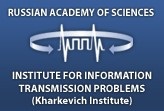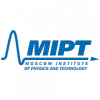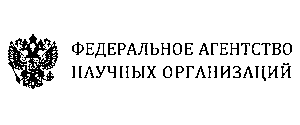| Wednesday, September 9 17:00 - 17:40 Flagman 3 | Session: StatisticsData Science |
| Chair: Ph.D. Vladimir Spokoiny |
Sergey Dovgal, Vladimir Spokoiny
Fisher and Wilks Theorems for Likelihood-Based Density Estimation
Abstract: This paper revisits the local likelihood density estimation approach, introduced by Loader. This method also allows to estimate the derivatives of the density function, and aggregates them in a complex manner to obtain the final estimate. We study properties of the estimate and prove Fisher and Wilks phenomena. The framework of Spokoiny was used to obtain finite-sample bounds for the estimate. We also allow model misspecification and express the error in terms of «model bias».
Kirill Efimov, Vladimir Spokoiny
Smallest accepted method for model selection
Abstract: This paper presents a method of model selection based on a smallest accepted (SmA) rule: a model is accepted if it is not rejected against any larger model. The final choice is the simplest accepted model. Model comparison is being done by multiple testing. We present oracle results on subset and parameter estimation for the proposed method.
Maxim Panov
About accuracy of Gaussian approximation of posterior distribution in growing dimension models
Abstract: The aim of the paper is to obtain tight bounds for Gaussian approximation of the marginal posterior distribution in quite general parametric setup. We follow the presentation of (Panov & Spokoiny, 2015) and work essentially under the same conditions. However, we prove that the total variation distance between posterior distribution of target parameter and corresponding Gaussian distribution can be bounded by the error term of the order p , q^{1/2}, n^{1/2}, where p is the dimension of the full parameter, q is the dimension of the target parameter and n is the sample size, which improves the bound p^{3/2} / n^{1/2} known previously. We also establish better contraction rate for the posterior distribution of the target parameter. The results can be directly applied in the sieve approach to the semiparametric inference.
Nazar Buzun, Alexandra Suvorikova, Vladimir Spokoiny
Multiscale parametric approach for change point detection
Abstract: This work presents a novel algorithm for change point detection, that can be applied for analysis of data of unknown nature. It is based on likelihood-ratio test statistics, as its behaviour can be described in terms of \chi^2-distribution even in case of model misspecification. To discover change point in the quickest way, statistics is calculated in a set of running windows of different scales. Algorithm is self-tuned: critical values are justified by data and calculated with multiplier bootstrap procedure. To make the method more robust for outliers, the concept of change-point patterns is presented.
Yury Yanovich, Maria Kiselyus
Generation of random sequences of points with a given density on manifolds
Abstract: В машинном обучении при построении регрессионных зависимостей или решении задач классификации многомерные описания объектов часто являются избыточными и функционально зависимыми. Такие описания зачастую лежат около многообразий существенно меньшей размерности, чем размерность их первичной записи. Данное предположение называется гипотезой многообразия (Manifold Hypothesis). Использование такой информации может помочь в решении исходной задачи. Так возникает задача оценивания многообразий. В последние годы был разработан ряд подходов, таких как изометрическое отображение (Isomap), локально-линейное вложение (LLE), выравнивания локальных тангенциальных пространств (LTSA) и спектральных вложений Грассмана-Штифеля (GSE), для решения данной задачи. В работе реализован подход для создания генераторов последовательностей случайных величин на многообразиях, основанный на методе выборки с отклонением. Такие последовательности могут быть использованы для тестирования и сравнения алгоритмов оценивания многообразий, а также для тестирования методов оценки плотности на многообразиях. Предложенный подход тестируется для равномерных плотностей на двумерных поверхностях.








